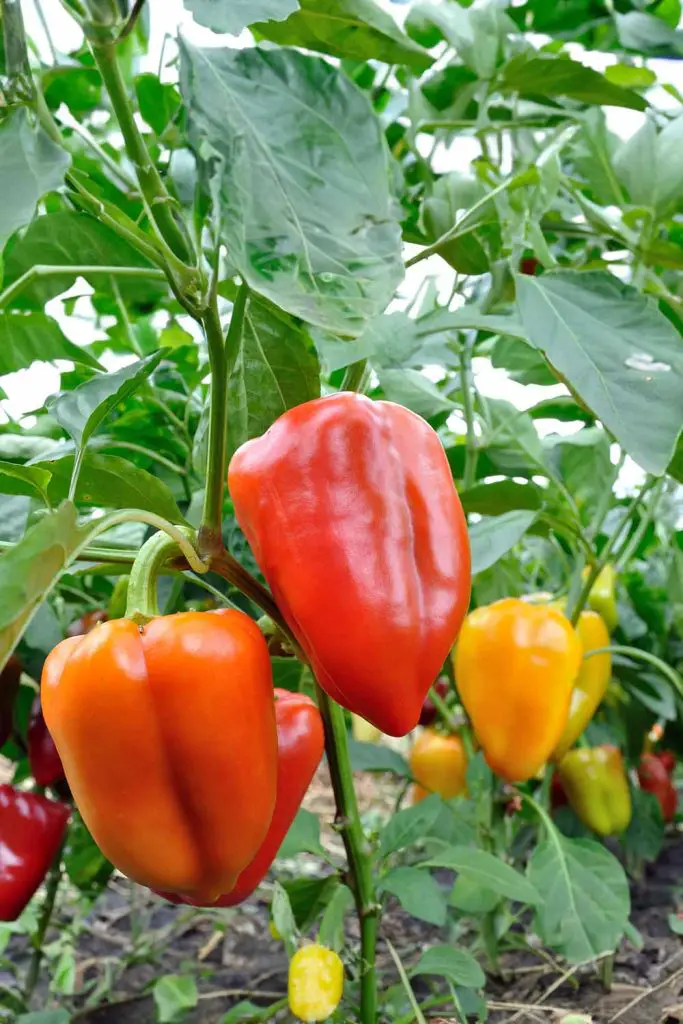Are Your Pepper Plants Growing Slowly – Here May Be Why!

Peppers are a beloved addition to many gardens, celebrated for their vibrant colors and unique flavors. However, they can sometimes be frustratingly slow to grow. If your pepper plants are taking their sweet time, you’re not alone.
Understanding the potential reasons behind slow growth can help you take the necessary steps to ensure a bountiful harvest. Let’s explore nine possible causes for slow-growing pepper plants and how to address them.
Inadequate Soil Quality
Soil is the foundation of plant health. If your pepper plants are growing slowly, the first thing to check is the quality of your soil. Peppers thrive in well-draining, fertile soil rich in organic matter.
A soil test can reveal deficiencies in essential nutrients like nitrogen, phosphorus, and potassium. To improve soil quality, consider adding compost, aged manure, or a balanced fertilizer.
Incorrect Watering Practices
Watering is a delicate balance. Both overwatering and underwatering can stress pepper plants and hinder their growth. Peppers prefer consistently moist soil but don’t tolerate waterlogged conditions.
Ensure your plants receive about 1-2 inches of water per week and adjust based on weather conditions. Drip irrigation or soaker hoses can provide steady moisture without saturating the roots.
Insufficient Sunlight
Sunlight is crucial for photosynthesis. Peppers need at least 6-8 hours of direct sunlight each day. If your plants are shaded by trees, buildings, or other obstacles, they may not be getting enough light to fuel their growth.
Consider relocating your plants to a sunnier spot or pruning surrounding foliage to increase light exposure.
Temperature Extremes
Peppers are temperature-sensitive. They thrive in warm conditions but can be stunted by extreme temperatures. Ideal daytime temperatures range from 70-85°F (21-29°C), with nighttime temperatures no lower than 60°F (15°C).
Use row covers or cloches to protect young plants from cool spring nights and provide shade or mulch during intense summer heat.
Pest Infestations
Pests can wreak havoc on pepper plants. Common culprits include aphids, spider mites, and pepper weevils, which can damage leaves, stems, and roots, impeding growth. Regularly inspect your plants for signs of pests and take action as needed.
Natural predators like ladybugs, insecticidal soaps, and neem oil can help control pest populations.
Diseases and Fungal Infections
Diseases can spread quickly in the garden. Peppers are susceptible to various diseases such as bacterial spot, powdery mildew, and root rot. These diseases can weaken plants and stunt their growth.
Practice good garden hygiene by rotating crops, avoiding overhead watering, and removing infected plants promptly to prevent the spread of disease.
Nutrient Imbalances
Nutrient deficiencies can stunt growth. While a soil test is the best way to diagnose nutrient imbalances, signs of deficiency can sometimes be observed. Yellowing leaves may indicate a lack of nitrogen, while purple leaves can signify a phosphorus deficiency.
Addressing these imbalances with targeted fertilizers or amendments can promote healthier, faster-growing plants.
Poor Pollination
Pollination is essential for fruit set. If your pepper plants are flowering but not producing fruit, poor pollination could be the issue. Peppers rely on wind and insect pollinators like bees to transfer pollen.
Planting flowers that attract pollinators, such as marigolds and sunflowers, near your pepper plants can improve pollination rates.
Overcrowding and Competition
Plants need space to grow. Overcrowded pepper plants compete for water, nutrients, and sunlight, leading to slower growth. Ensure proper spacing between plants, typically 18-24 inches apart, to give them room to thrive.
Thinning out weaker plants can also reduce competition and promote healthier growth.
Growing peppers can be a rewarding endeavor, but slow growth can be a common challenge. By addressing these nine potential issues—soil quality, watering practices, sunlight, temperature, pests, diseases, nutrient imbalances, pollination, and overcrowding—you can create an optimal environment for your pepper plants to flourish.
Remember, gardening is both an art and a science, requiring patience, observation, and a willingness to learn from your plants. Happy gardening, and may your pepper harvest be abundant!

More interesting articles you may be interested in reading:

